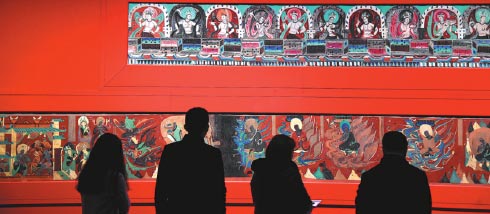 |
|
Visitors at a Silk Road exhibition held in Chengdu Museum in 2017. [Photo by Xue Yubin/China Daily] |
If anything, the light, unhesitant brush strokes, and the sense of spontaneity they convey belie the hardship of a journey on a road that traversed the Eurasian continent, from the heart of ancient China to the shore of the Mediterranean and Rome. On the way it cut through forbidding deserts and scattered grasslands, skirting inhospitable mountains and deep depressions, before completing the entire 8,000 kilometers and stringing together, en route, a great variety of local cultures that came to form the diversity and dynamism of the Silk Road.
Today the desert wind the ancient postman had battled still howls, but the parade of people who once trekked and traded along the road has long since disappeared, with the vestiges of the cities, fortifications and temples of worship they helped built serving as solitary footnotes to what should be a hefty and heavily-annotated chapter in the history of human exchange.
But not all was lost, says Ge Chengyong, a historian who was behind an exhibition held in Hong Kong recently titled "Miles upon miles: world heritage along the Silk Road". More than 200 pieces of precious antiques were displayed in the exhibition, which ended in early March, and it told an immensely complex and infinitely fascinating story of human endeavor and engagement.